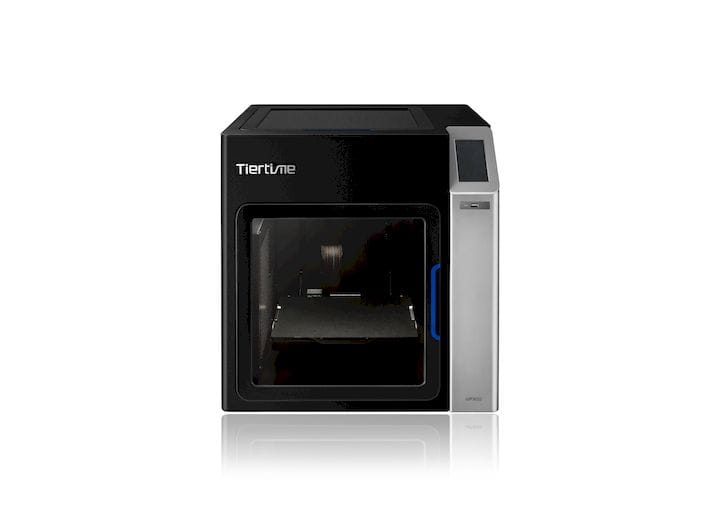![The UP300 desktop 3D printer [Source: Tiertime]](https://fabbaloo.com/wp-content/uploads/2020/05/image-asset_img_5eb0a3e4bbbae.jpg)
Tiertime’s flagship desktop 3D printer is a very versatile device.
Tiertime has been producing desktop 3D printing equipment for a very long time. In fact, their original PP3DP Up! device was one of the first devices reviewed by this publication in 2010, eight years ago!
Their UP300 is the latest in a long series of gradually enhanced desktop 3D printers that grew from the foundations of the PP3DP device. It incorporates many standard features one would expect on any competent desktop 3D printer these days, as well as some surprisingly unique features.
Unlike some desktop 3D printers, the UP300 is a completely enclosed machine, able to capture stray heat and increase print reliability.
![Inside the UP300 [Source: Tiertime]](https://fabbaloo.com/wp-content/uploads/2020/05/image-asset_img_5eb0a3e520abc.jpg)
The UP300 sports a generous build volume of 205 × 255 × 225 mm, able to print most common objects down to a layer size of 0.05mm. The build platform now has removable glass plates, making it much easier to remove completed prints – and also enabling the immediate start of a second print if you have a second build plate handy. By the way, these plates are double sided in case one side becomes damaged.
Where the experience of Tiertime shows is in the extruder design for the UP300. Long-time 3D printer operators will know that it is often challenging to 3D print a variety of materials with the same extruder mechanism, as some materials simply have different characteristics, sometimes mutually exclusive.
![Three different extruders for the UP300 [Source: Tiertime]](https://fabbaloo.com/wp-content/uploads/2020/05/image-asset_img_5eb0a3e5654b7.jpg)
To that goal the UP300 has three separate extruders, only one of which you will have mounted at a given time. The three extruders are designed to handle three common material scenarios, including higher-temperature materials like ABS, up to 299C, lower-temperature materials like PLA, and the frequently challenging-to-print flexible materials. You simply select the appropriate extruder for a given print job.
To handle the higher-temperature materials the UP300’s build plate can reach 100C, suitable for ABS and similar materials. Heat from this plate will be captured by the machine’s enclosure.
Like many desktop 3D printers these days, the UP300 has swappable nozzles in sizes of: 0.2mm, 0.4mm, 0.5mm (for flexible materials), and 0.6mm. While the 0.4mm nozzle would be a default, the 0.2mm nozzle is used for fine detail on smaller parts, and the 0.6mm nozzle is used for big decreases in print duration for larger prints that don’t require the detail.
Controlling the UP300 can be done via its 4.3 inch color touch screen, or through its USB & WiFi connections.
The UP300 requires 1.75mm filament, and it can handle spools up to 1kg in size. During printing it can detect when the filament ends prematurely, putting the machine into a paused state, and allowing the operator to swap spools and resume printing.
Fortunately, the UP300 does allow the use of third party filaments, making the machine able to take advantage of unusual materials or lower pricing.
![Filters used in the UP300 [Source: Tiertime]](https://fabbaloo.com/wp-content/uploads/2020/05/image-asset_img_5eb0a3e5aa4a4.jpg)
One feature I am very pleased to see is the inclusion of HEPA and activated carbon filters that will help, but not quite eliminate the emission of particles during 3D printing operations. Many 3D printers do not include filters, but not in this case. You will not smell anything while the UP300 operates.
The Tiertime print queue feature that allows multiple users to queue up print jobs is also available for the device, making it more suitable use by groups of people.
It seems to me that Tiertime is including features that would make the machine attractive for use in office settings: the print queue and air filtration in particular fall along those lines. The company’s long reputation for quality could also help boost this product among professionals.
With a one-year manufacturer’s warranty, the UP300 is available for US$2,199.
Via Tiertime







There have been multiple attempts to develop continuously operating 3D printers, but none seem to have been widely adopted. Why is this the case?